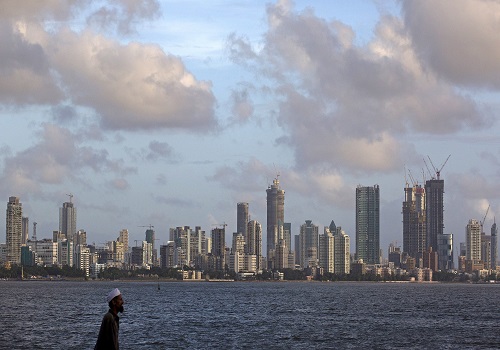Foreign flows into Indian bonds hit 6-year high ahead of index inclusion

Follow us Now on Telegram ! Get daily 10 - 12 important updates on Business, Finance and Investment. Join our Telegram Channel
Foreign inflows into Indian government bonds hit the highest level in six years in November ahead of the securities being included in JPMorgan's emerging market index next year, with investors and treasury officials expecting buying to continue.
Foreign portfolio investors bought a net 127.2 billion rupees ($1.53 billion) of bonds in November, the highest since June 2017, data from Clearing Corp of India showed.
Of these, around 96.6 billion rupees of purchases were securities with no investment limit, which will be included in the JPMorgan index.
In addition to the expectation that bond yields in developed markets have peaked, Indian government bonds are also being supported by inflows due to the index inclusion, said Nagaraj Kulkarni, co-head for Asia rates strategy (ex-China) and head - flows strategy at Standard Chartered Bank.
He expects foreign buying in Indian bonds to continue till June, when these sectors are added to the JPMorgan index.
In September, JPMorgan announced that India will get a weightage of 10% in the index in a staggered increase between June 2024 and March 2025.
While the FTSE Russell did not include Indian securities in its FTSE Emerging Markets Government Bond Index, markets are awaiting a decision on India's inclusion in the Bloomberg Global Aggregate Bond index.
Sameer Karyatt, executive director of treasury and markets at DBS Bank India, expects inflows of $25 billion in case of inclusion in the Bloomberg index, above the $20 billion to $25 billion in flows likely due to the inclusion in JPMorgan indexes.
The inflows will boost foreign ownership of Indian sovereign bonds, which account for just 1.9% of the federal government's outstanding debt.
For the year so far, foreigners have bought a net 432.6 billion rupees of Indian bonds -- the highest since 2017. They were net sellers for three consecutive years through 2022.
Apart from the prospect of India's inclusion in global bond indices, economic factors are also supporting buying from foreign investors.
"India is an attractive country to invest," Freddy Wong, head of Asia Pacific at Invesco fixed income told the Reuters Global Markets Forum (GMF).
Wong sees India's strong GDP growth, the outright high yield and stable currency as factors that give "a strong backdrop for investors to consider investing".
In November, a fall in U.S. yields as well as lower oil prices aided flows, said Ritesh Jain, founder of Pinetree Macro, a U.S. based fund.
U.S. Treasury yields have dropped, with the 10-year yield dropping by over 50 basis points in November to 4.35%, amid rising bets that the Fed may start cutting rates in the first half of 2024.
Jain sees value in shorter-term Indian government bonds if the local currency remains stable but said it is too early to bet on flows in longer duration bonds.
Yields on India's 10-year Treasury bonds are above 7%. Most analysts do not expect India's central bank to start loosening policy until the second half of next year.
The majority of foreign inflows in November were in bonds of less than five-year duration.
Given the flat bond yield curve, investors have preferred to invest in less than five-year segment, but as the monetary policies turn, and closer to the inclusion, we expect inflows to shift into five-year to 10-year segment, Standard Chartered Bank's Kulkarni said.
($1 = 83.3080 Indian rupees)












 320-x-100_uti_gold.jpg" alt="Advertisement">
320-x-100_uti_gold.jpg" alt="Advertisement">












